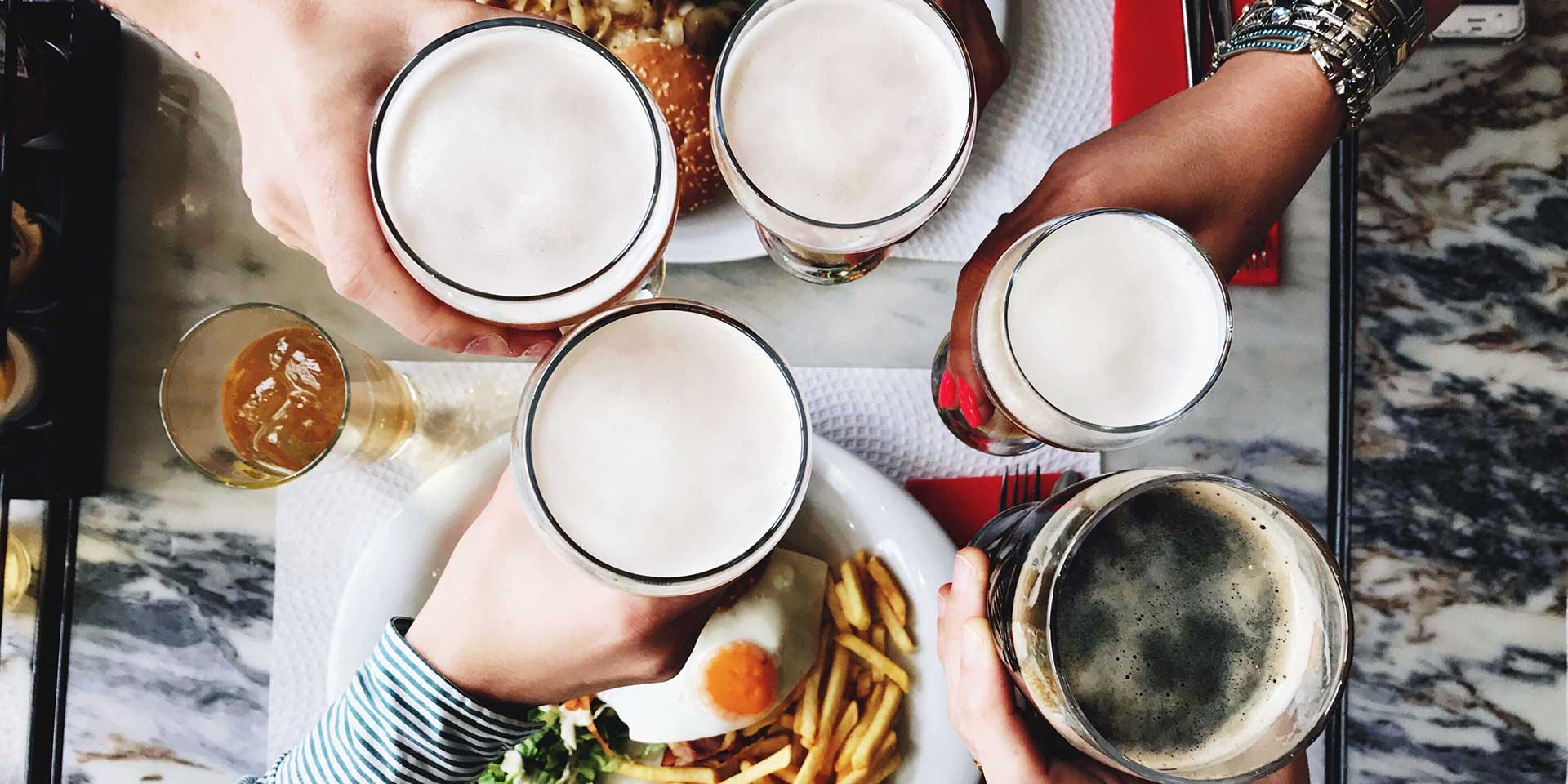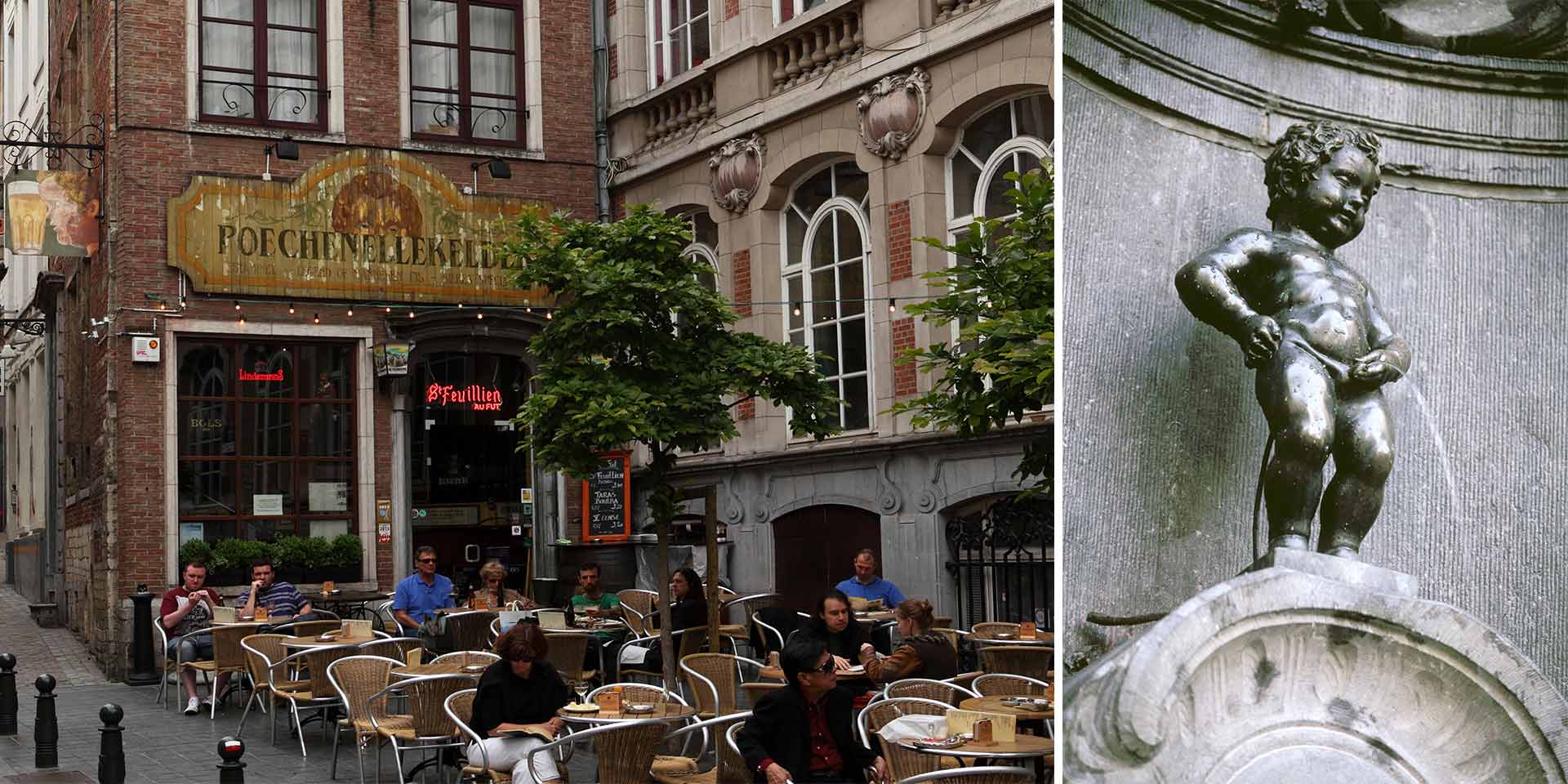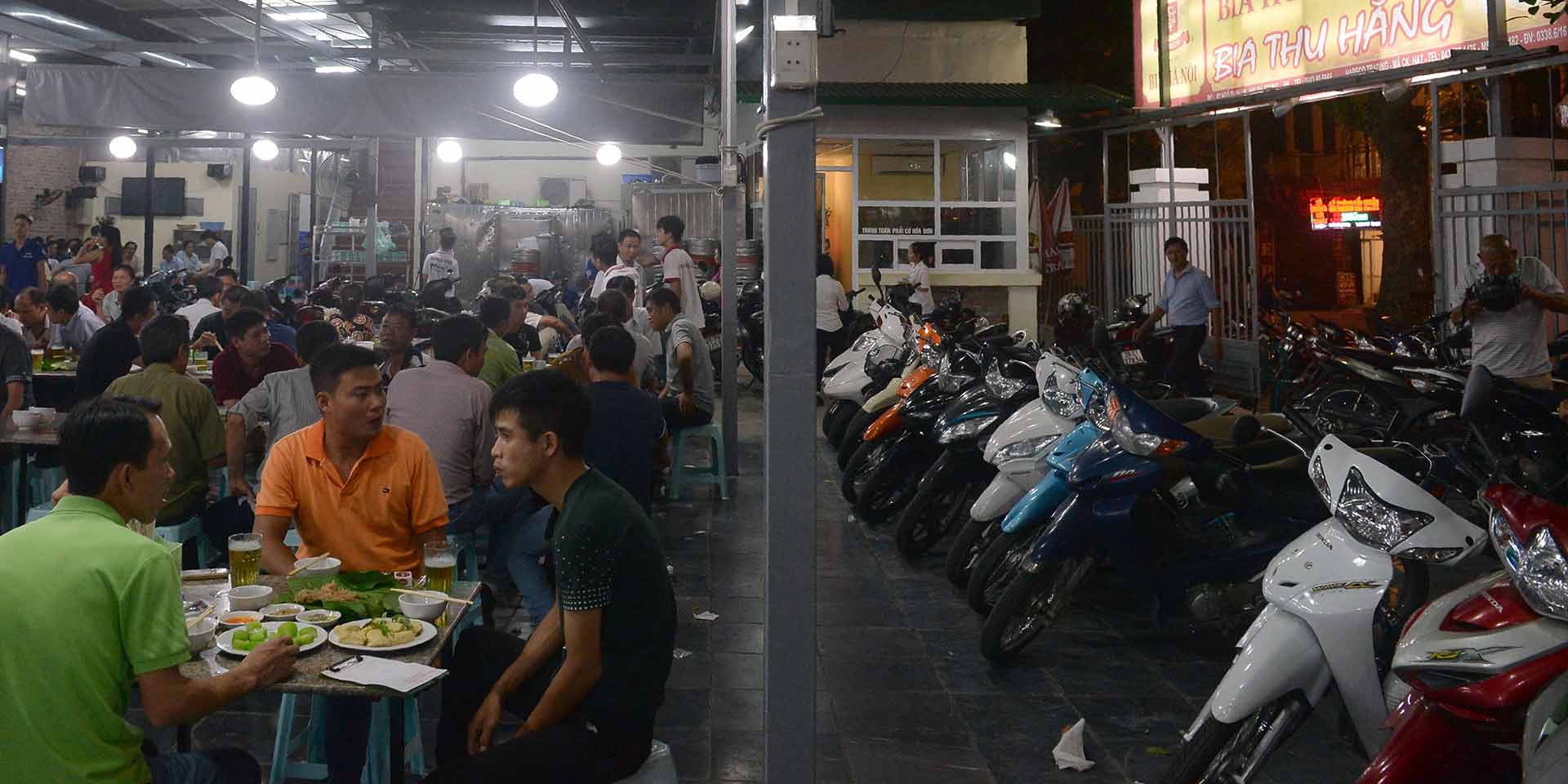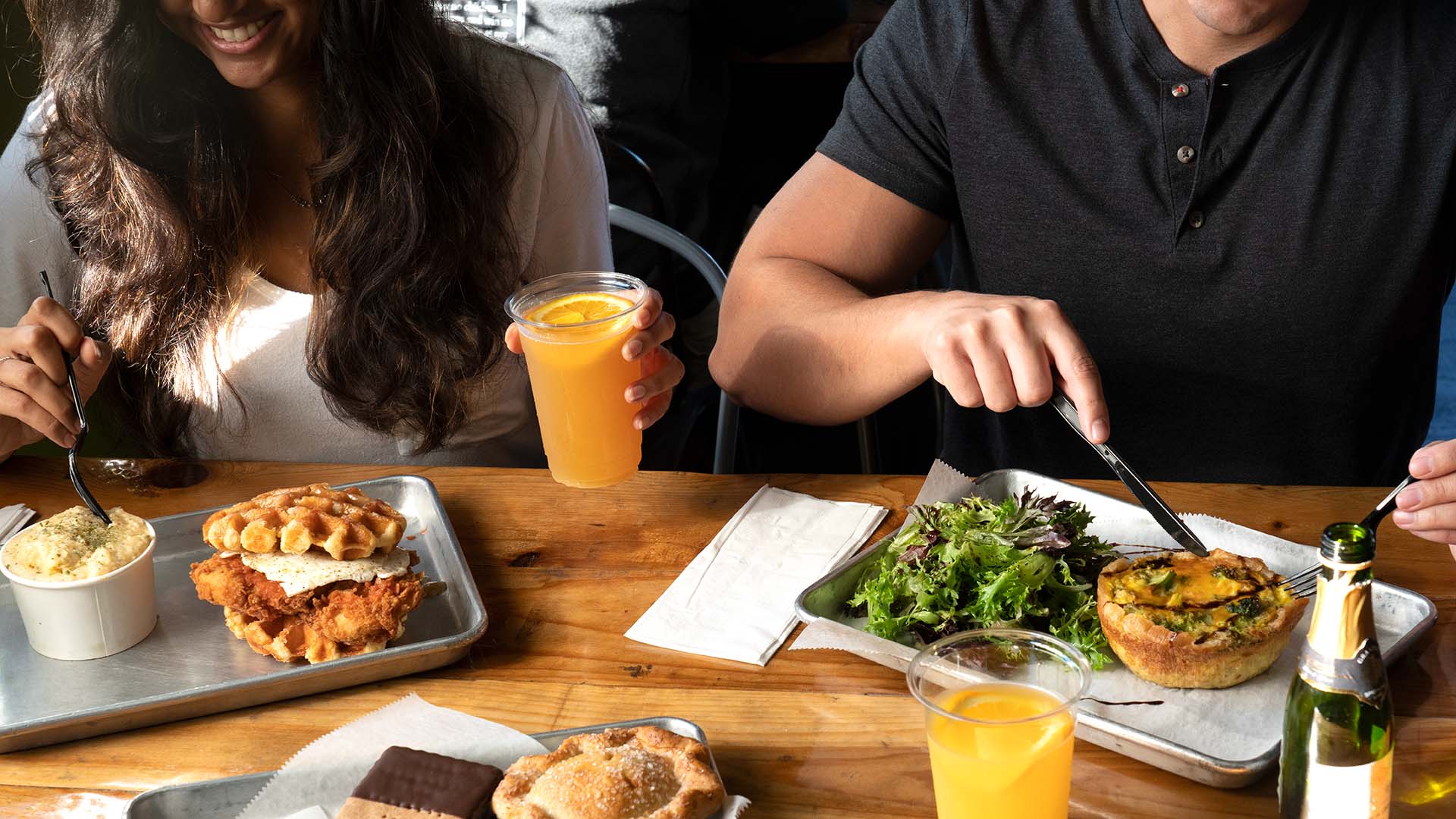
Drink like a local, wherever you may travel. (Photo: Getty Images)
Eat + DrinkHow to Raise a Beer Glass Around the World Like a Local
By Paige Conner TotaroFans of kicking back with a cold one on vacation will likely want to try the local brews when they globe trot. But beer traditions can vary country by country — and in some cases, if you’re not aware of local customs, you may find yourself feeling left out of a popular tradition. Fear not.
We’ll give you tried-and-true tips on how to drink beer like a local around the world.
EUROPE
Germany
Germans have always (well, since 1516) had strict rules about beer production, known as the Reinheitsgebot, which originally dictated that beer could only include three ingredients: barley, hops and water.
Today those rules have loosened, and Germans love their local beers, from the helles (pales) of Munich to the goses (salty sour beers) of Leipzig. But there’s a Bavarian drinking tradition that requires another style of ale.
Across this region, brotzeit, or second breakfast, happens around 11 a.m. and typically includes a snack like a pretzel or sausage and is accompanied by a weißbier — a hefty hefeweizen — to aid digestion.
For sweet Bavarian scenery along with your brotzeit, visit the Ettal Abbey brewery in the Ammergau Alps, where monks have been making beer since 1609.
Belgium

Belgians have been experimenting with beer for centuries. During the Middle Ages, when disease ran rampant and hygiene was lacking, beer was considered a healthy alternative to water, which often harbored bacteria.
From Trappist dubbel and tripel ales to farmhouse saisons, fruity sour lambics, and the most popular pilsner in the world, Stella Artois, Belgians enjoy a variety of beers. But don’t ask for — or expect — your drink to be poured into a common pint glass.
Different beers require different style glasses to accentuate qualities of the beer: the foamy head, the color, the aroma. There’s even a glass etched to cause a tiny stream of bubbles to rise from the bottom.
You can try many of the beers, and note their accompanying glasses, at Poechenellekelder, a puppet-themed bar (don’t be freaked out — it’s a Brussels tradition!) around the corner from the tiny statue (and city mascot), Mannekin Pis.
The Czech Republic (Czechia)
Czechs drink more beer per capita than locals of any other country, and what they drink most often is pilsner, the light lager born in the Czech city of Plzen.
Czechs drink beer at any hour of the day but not terribly late into the night. Even the most popular historic pub in Prague, U Fleku, closes before midnight.
To fit in with the locals, when someone raises a toast, be sure to look into the eyes of each person in the group before taking a sip.
Ireland
Yes, the Irish are fond of drinking, but despite their reputation, they don’t drink as much as the Germans or Czechs. Their drink of choice is stout, and Guinness is the most popular brand, but ales, lagers and ciders all have a place at the bar.
O’Donoghue’s is arguably one of the most traditional Irish bars in Dublin, with live music every day of the week and Guinness being poured in a nearly steady stream. Traditionally, men would buy a beer by the pint, and women by the glass, but feel free to order however you like.
If someone buys a round of beers, it is common courtesy to return the favor before the night is over.
SOUTHEAST ASIA
Southeast Asia may not be the first place you consider when you think of beer, or even the tenth place, but beer has a solid history in the area. So much so that the region is now the largest consumer of beer in the world.
Usually, light lagers are the norm here, but tourists and locals are creating demand for more variety, and craft beer bars are popping up around the region.
Vietnam

Dodging nonstop scooter traffic on the streets of Hanoi, you will no doubt come across a herd of short plastic stools centered around a single keg of bia hoi, or fresh beer. The beer is brewed daily and delivered to entrepreneurs around the city, who need only set out the keg and people will gather around for a beer … or five.
Makeshift bars fill Bia Hoi Corner in Hanoi, and the junction is where many backpackers get their beer on, but you can find bia hoi all over the city. Costing as little as 15 cents a glass, even travelers on the tightest budget can imbibe freely.
Cambodia
One of the more challenging realizations for an English-speaking tourist ordering a beer in Cambodia is that two of the major beer brands in the country are Angkor and Anchor. (Say them out loud.)
Each lager has its fans, but most people have a strong preference for one over the other, so once you’ve picked your poison, be sure you pronounce your order correctly: Locals pronounce Anchor with a soft CH (an-CHORE), and Angkor like the nearby temple complex (ANG-kor).
Thailand
Singha (pronounced “sing”) and Chang (which is the Thai word for “elephant”) are the most popular beers across the country. The pale lager cools the fire of spicy Thai cuisine. Generally, you’ll receive a glass with a solid chunk of ice over which you’ll pour your beer, and if you’re lucky, it will be quickly replaced as it melts.
China
Though the earliest records of beer brewing in China go back about 9,000 years, modern brewing in China really began in the late 19th century, when Russians, Czechs and Germans set up breweries in Harbin, primarily to supply their soldiers.
Beer culture in China is rich in ceremony. Traditionally, beer was less a beverage to be savored than a tool for social games. Beware of any toast that starts or ends with “ganbei,” which means “dry glass” and indicates that you are expected to drink the entire glass.






